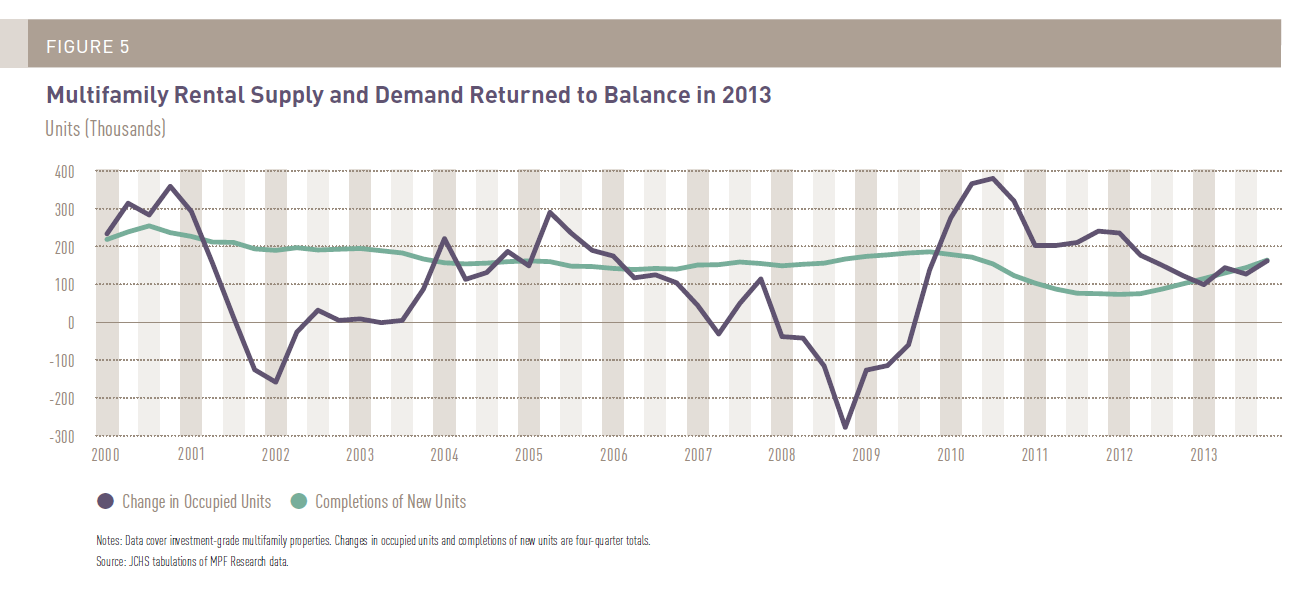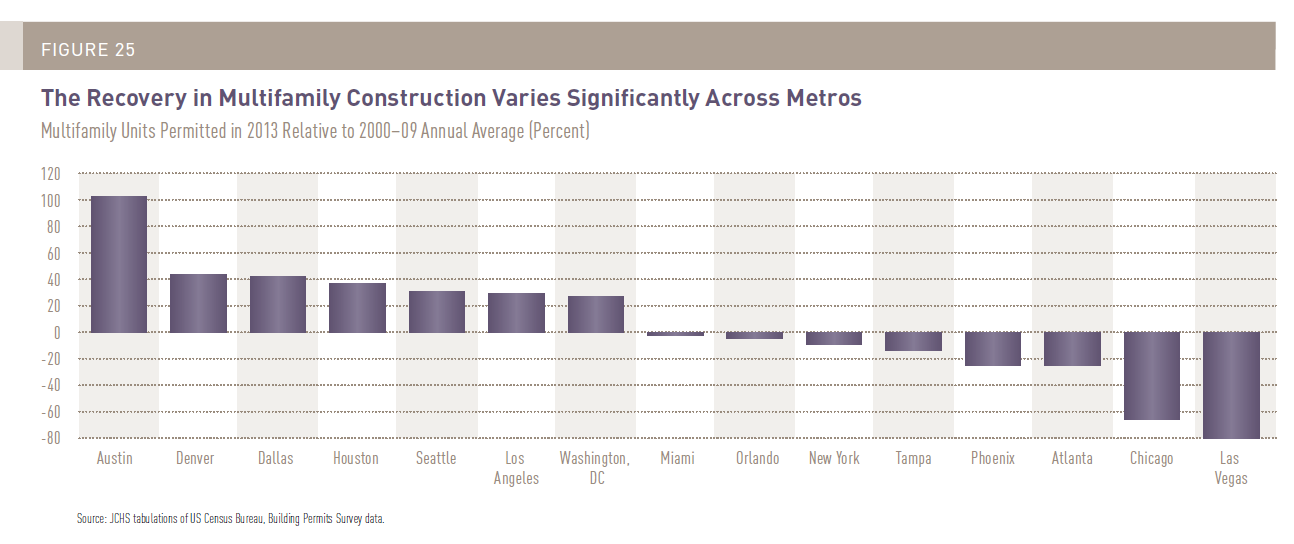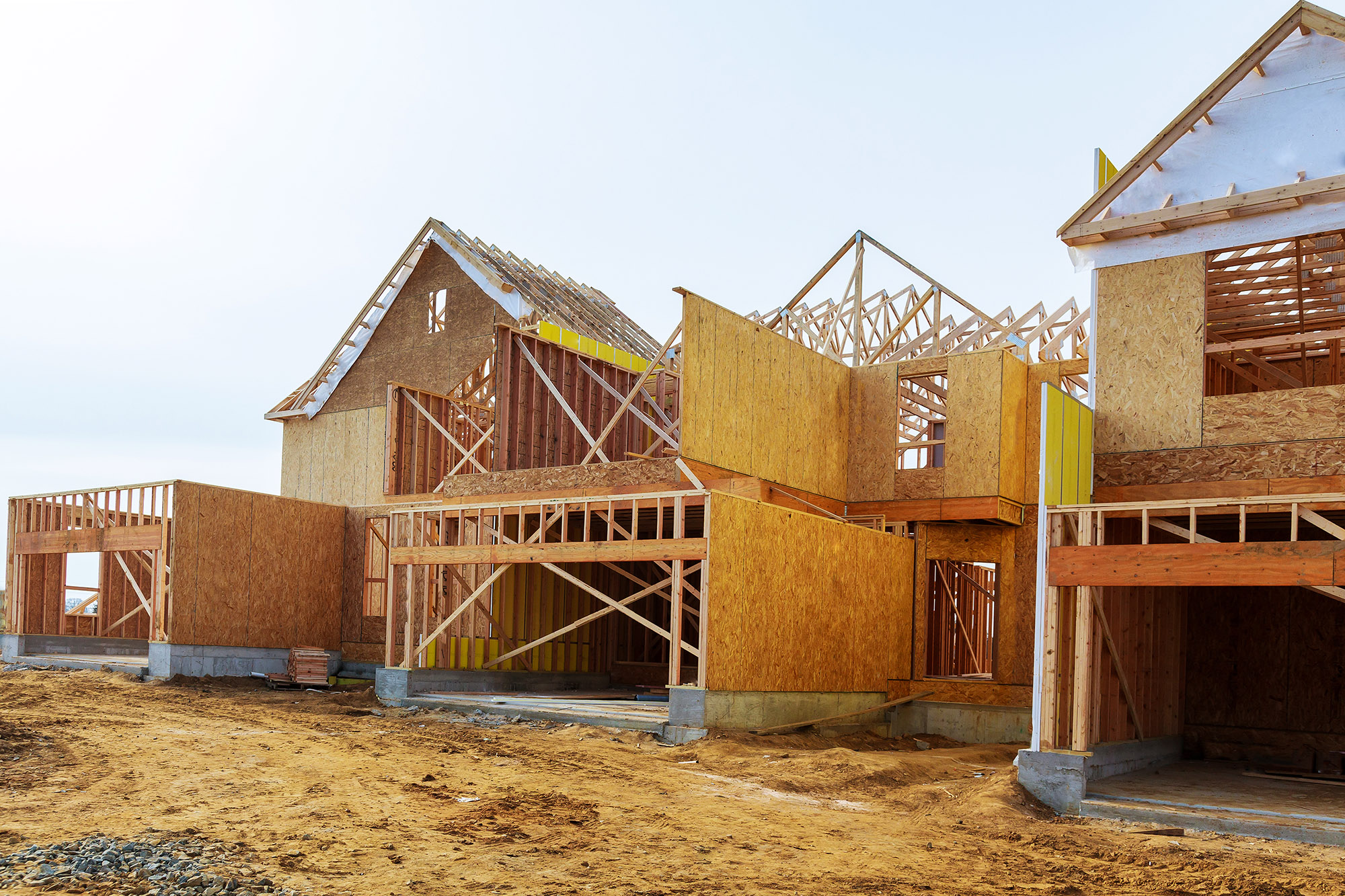Rental Supply is Catching up with Strong Demand, but not for Affordable Units
The Joint Center’s new State of the Nation’s Housing report summarizes ongoing and emerging trends in U.S. rental markets. Foremost among these is the strength of demand for rental housing, which continued to soar in 2013 albeit at a slower pace relative to recent years. Indeed, from 2005 to 2013, the U.S. saw a net increase of around 740,000 renter households per year. This far exceeds historical renter household growth of around 410,000 per year on average from the 1960s through the 2000s.
With rental demand soaring, supply of multifamily rental units—which house over 60 percent of all renter households—did not keep up. In 2009, for example, construction began on just 109,000 multifamily units. According to apartment data from MPF Research, demand exceeded new additions to supply by nearly 200,000 units during 2010, and by 170,000 units in 2011. Rental markets tightened as a result of this excess demand. Rents rose, occupancy rates climbed to 95 percent for professionally managed apartments, and rental property values reached new peaks.
But as of 2012, supply picked up and demand eased, bringing the two closer in line with each other (see Figure 5, from our report below). Indeed, that year demand for apartments outpaced supply by only 21,000 units. Last year the two measures came even closer into alignment. Completions of new, professionally managed apartment units reached 163,000 in 2013, marginally exceeding the increase in the number of occupied units. In other words, supply and demand lined up fairly evenly. (Click charts to enlarge.)

Relative equilibrium also became evident in a slight easing of rent pressures. Indeed, growth in rents for professionally managed units lowered to a still-healthy rate of around 3.0 percent on average in 2013, down from 4.0 percent two years earlier. Growth in net operating income for owners of large apartments moderated to 3.1 percent in 2013, down from between 6 and 11 percent in 2011-12 according to data from the National Council of Real Estate Fiduciaries. The annual rate of return on rental property investment likewise lowered to a more modest but sustainable 10.4 percent, about the same as in the ten years preceding the housing bubble and bust (1995-2004).
While supply of multifamily units rebounded at the national level, the story is more varied across metro areas. In over half of the nation’s largest metro areas, the volume of permits for new multifamily units in 2013 remained below last decade’s average. For example, previously booming metros including Las Vegas, Chicago, Atlanta and Phoenix all saw permitting decline by 25 percent or more compared to levels seen between 2000 and 2009 (see Figure 25, from our report) Yet several metros in Texas, as well as Denver, Seattle, Los Angeles, and Washington D.C. registered growth relative to that boom period. Demand would need to remain strong in such areas to absorb this future supply.

Not all segments of the market are in balance either. Demand for units affordable to low-income renters and families far exceeds the supply of available units. An Urban Institute analysisindicates that in 2012, 11.5 million extremely low income households competed for just 3.3 million affordable, available units. This suggests a supply gap of 8.2 million units needed to house extremely low-income renter households, up from a gap of 5.2 million units ten years earlier. Lack of affordable, available housing often requires struggling households to pay excessive shares of their income on housing, reducing the money they have left over to buy other goods and services, such as food and healthcare.
As Daryl Carter, Chairman of the National Multifamily Housing Council, pointed out during the webcast release of our new report, greater attention needs to be focused on the types of units being built to ensure that they meet the affordability and sizing needs of today’s renter households. These include not only low income households, but also an increasing number of families with children, a group who saw particularly steep declines in homeownership rates since the Great Recession. Panelists on the webcast also emphasized the importance of federal rental assistance measures to address the undersupply of affordable units, as well as steps local communities and developers can take. These include relaxing zoning rules to allow more residential construction and tying affordable housing plans to development projects at the local government level.

